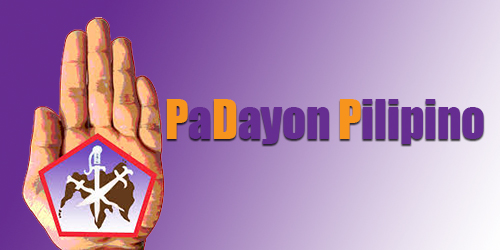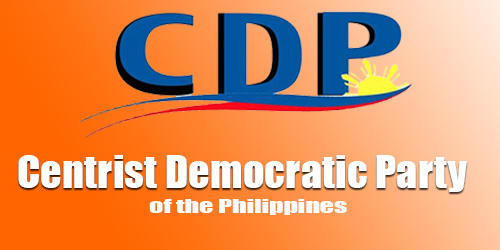Renato Tibon .
THE story of El Dorado, the lost city of gold, sprang up after the first Spanish explorers’ travel narratives talked of a mythical kingdom of unimaginable treasures deep in Central and South America. The legendary city lured many Europeans into forbidding rainforests and mountains, revealing not much of a place teeming with gold as the mystique of a people who value the precious metal for nothing more than a votive offering.
Perhaps it was the same motivation that inspired people from neighboring provinces to journey and settle in Cagayan de Oro (the appended “oro” could mean the gold found by Spaniards in the great river that lent Cagayan its name).
Some studies suggested that to some migrants especially from Visayas (many outmigrants were from Bohol), any place in Mindanao, the Land of Promise, is Cagayan de Oro. The parents of one of the most beloved mayors of the city, Justiniano “Tinying” R. Borja were Boholanos. Some of the city’s leaders were in fact not born in Cagayan de Oro, but were considered Kagayanons by residency.
But like the fabled “Golden One”, these pilgrims learned it was the local inhabitants rather than the place that accorded the noteworthy appellation of “City of Golden Friendship”.
With population rising steadily at an average growth rate of 3.0+% from just over 20 thousand in 1903 to 675,950 in 2015, settlers may have been drawn by the golden opportunities offered by the city’s economic potentials and generally convivial mix of people more than the imaginary treasures in its rivers and hills.
Validated by archaeological research, El Dorado likewise referred to the rite of passage of rich rulers succeeding to the throne. Covering themselves with nothing but gold dust, the “golden one” would paddle out on a raft carrying gold and precious objects which the people crafted and offered to the gods by throwing them into the sacred lake. The spectators would then commit their allegiance by shouting their approval from the shores. The amount of treasures deposited in these lakes would attract looters which today are a cause of concern for authorities in many South American countries.
In similar manner, local elections could have taken the form of this rite of passage with leaders given terms of office, although the similarity ends there. Cagayan de Oro has gone through this ritual of change in leadership yet progress was elusive, hampered and slowed down for varied reasons, but chiefly by corruption and failures in governance. Instead of expending precious resources to address local concerns, personal interests were the predilection of some corrupt leaders, neglecting vital social services that cater to the needs of all constituents regardless of political colors.
Mayor Tinying Borja would be turning in his graves knowing the circumstances of Cogon Market, with its unkempt floors, darkened corners, messy and confusing stalls and alleys worsened by environs of smelly, rotting garbage caused by undisciplined traders occupying the narrowed streets. Same slovenly management can be said of Carmen Market. Growth and traffic congestion are made convenient reasons for failure in enforcement. It’s not just this unruly mob being a cause for concern as exiguousness in city leadership.
But that is about to change. Never in the history of the city has there been seen the brightest prospects for a progressive city than with the present crop of candidates proffering themselves to the voting public. Brilliant leaders led by Rufus B. Rodriguez and Jose Gabriel “Pompee” La Vina, running for Congressman for District 2 and Mayor of the city respectively, true Kagayanons by birth, with the coalition of experienced and competent candidates coming from CDP-Padayon, present themselves with sound and sustainable platforms of governance focused in Cagayan de Oro’s development.
These programs include initiatives in infrastructure, health programs, education, youth, culture and sports development, total mining and log ban, effective waste management using available technologies, housing projects for many deprived Kagayanons, efficient peace and order drive, establishment of community-based rehab centers to address drug dependency, improvement of natural sceneries and sights to promote tourism, and effective traffic management system among others. These initiatives have taken root in many parts of the city through the efforts of Cong. Rufus Rodriguez, albeit some are in a state of disrepair hankering for restoration having been neglected by the present lethargic leadership.
This is the dawning of a new Cagayan de Oro, the real “City of Gold” served by real native-born Kagayanons with genuine heart and proven competence and integrity.
(Renato Gica Tibon is a fellow of the Fellowship of the 300, an elite organization under Centrist Democracy Political Institute [CDPI] with focus on political technocracy. He holds both position as political action officer and program manager of the Institute. He is the former regional chairman for Region 10 and vice president for Mindanao of the Centrist Democratic Party of the Philippines [CDP].)
Disclaimer
Mindanao Gold Star Daily holds the copyrights of all articles and photos in perpetuity. Any unauthorized reproduction in any platform, electronic and hardcopy, shall be liable for copyright infringement under the Intellectual Property Rights Law of the Philippines.






